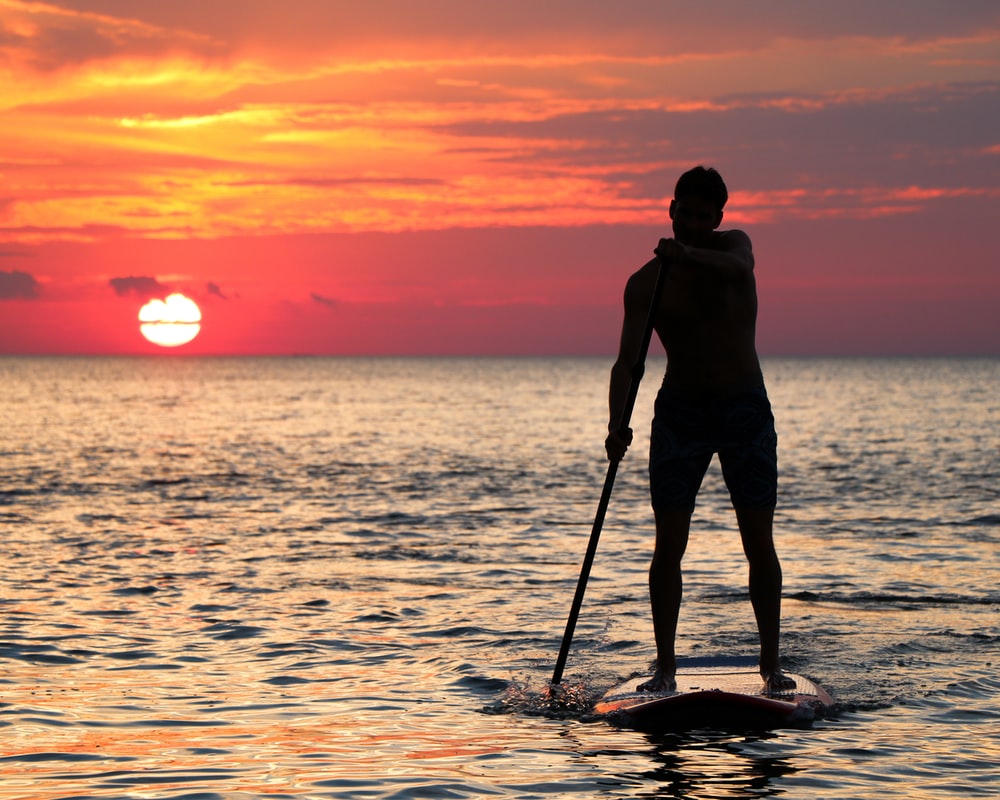
Much like coldwater swimming, stand up paddleboarding has been enjoying a pandemic-induced boom over the past year and is now one of the fastest growing adventure sports out there. Head down to your nearest beach, lake or river (Thames, we're looking at you) and you'll find the water peppered with paddle board enthusiasts cruising in the evening light, taking part in plastic clean ups or learning for the first time.
We caught up Lizzie Carr, seasoned SUP pro and first woman to circumnavigate the UK's canals on a paddle board, to find out what this sport is all about.
PS. Call to Adventure run a Stand Up Paddle Boarding trip suitable for beginners, it's a 3-day SUP, hiking and wild swimming trip along the stunning Jurassic Coast and a great way to gain experience and confidence quickly and safely.
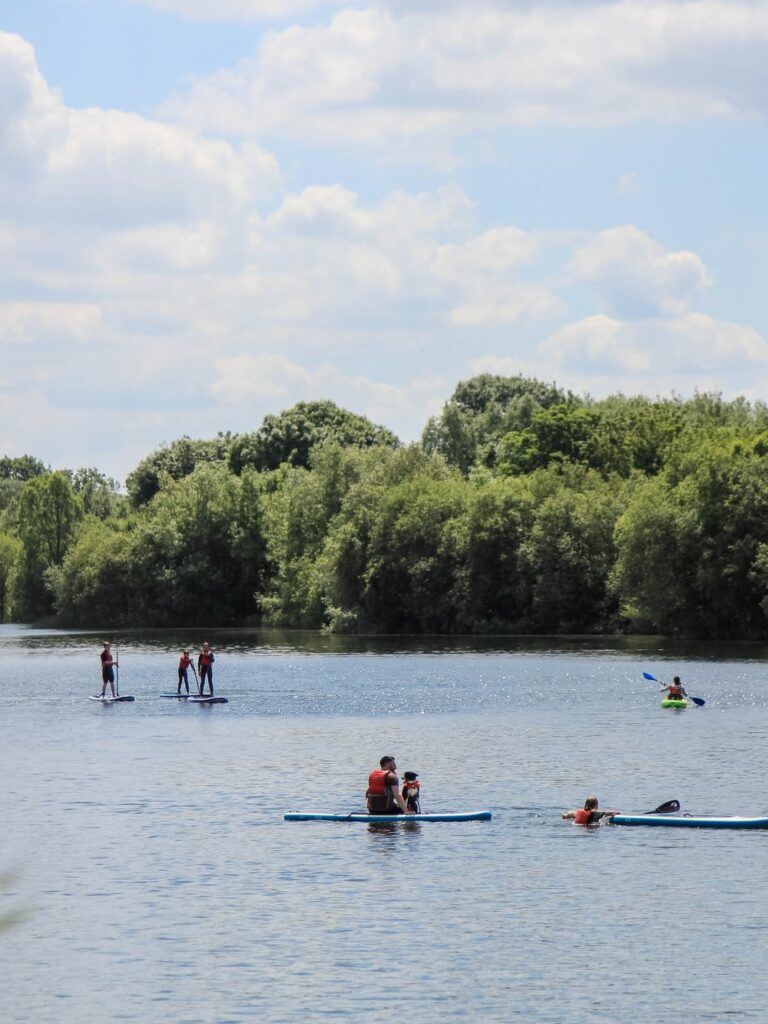
So what's it all about? Stand up paddleboarding involves... well, paddling on a board, standing up. Usually the board will be around 9-12ft in length and around 2-3 wide.
They're big beasts which means they're super buoyant and actually pretty easy to stay afloat on (much easier than surfing anyway). Stand up paddleboarding can be done on rivers, lakes, open seas or even your back garden pond if that floats your boat. Sorry, board.
Like other paddle sports, there's a few ways to enjoy paddleboarding. An early sunrise session on calm seas to get zen for the day, an evening river paddle to wash away the day's stresses, a SUP safari to explore hidden caves and secret beaches or even SUP surfing.

Paddleboarding originated back in the 1950's and 60's in Hawaii, when surf teachers would use them to take photos of pro surfers (the best sports are found by accident, right?) It spread across the US like wildfire in the early noughties and is only getting bigger.
So why do people love it so much? Well, it's fairly easy to learn, for a start. Whilst the idea of balancing on a board in the sea feels overwhelming for some, it is actually one of those rare sports that is a bit easier than it looks.
Plus, you don't need to be that fit for it (though it would make you fitter eventually!) and you don't need to sit around waiting for decent, clean surf.
It's also regarded as a super holistic workout, in that it does as much for your mind as it does for your core and and full body strength. It has an extremely quiet, 'at one with nature' quality to it and the way the board glides is hugely calming for lots of people. No wonder it's popular with yogis and meditation fanatics.
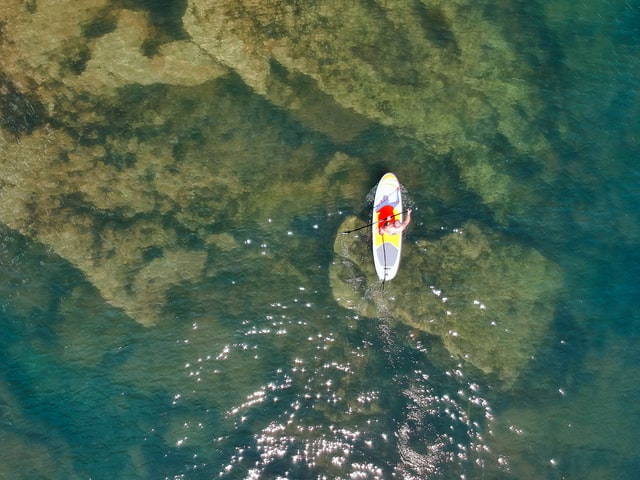
The first thing to consider is whether you want to invest in one, or just find somewhere that will let you try it out. If it it's the latter, head for your nearest club or hire centre and book yourself onto a lesson. Your guide will choose a paddle board that is the right size for you and you can see how you enjoy it before investing.
If you're looking to buy a stand up paddle board, there's a few things to consider. We've highlighted the key things to think about below.
Traditionally, all SUP paddle boards were solid, made up from a combination of materials such as foam, Kevlar, plastics, fibreglass and wood, and covered with coats of epoxy resin. These boards are nowadays regarded as higher performance boards.
Casual beginners might not notice, but hard boards are generally suited to SUP surfers, paddleboard racers and people performing advanced paddleboarding moves. As this is a beginners guide, you're probably best swerving the hard board for now and opting for an inflatable.
Inflatable paddle boards have become hugely popular in the last few years. If you're imagine a blow-up lilo style thing, think again, inflatable boards are still super rigid, buoyant and there's some really high performing technical boards out there.
They're way easier to store and carry than the hard paddle boards, last longer as they're not prone to dings and scratches (they're only fully exposed when on the water, the rest of the time they're packed away in a bag) and are a lot easier on the bank account.
If you go for an inflatable SUP, just make sure you go for a brand with great reviews, as there's a lot of cheap versions out there. Looking on Facebook marketplace or buying kit from end-of-season sale is a great move as you'll quickly outgrow your beginner board if you're on the water regularly.
Lizzie suggests that a beginners board should be as wide as 30 inches or more, and as long as 10-12ft. Obviously the longer and wider you go, the more buoyant the board will be, but you'll lose a little manoeuvrability as you go up in size too.
Along side your paddle board itself, there's 3 things you'll need: a leash; a personal flotation device (pfd/buoyancy aid) and a paddle.
The leash is relatively easy to find but it's crucial that you do so. It should be around a foot longer than your board (this is so the board won't hit you if it recoils in a wave) and will usually be made up of coiled cord that stretches.
There's heaps of different materials and thicknesses but any coiled cord of around 8mm of thickness will provide the right strength (and minimal drag) for beginner paddlers.
As for the paddle, this takes a little more thought, though you can usually buy it alongside the board and it will be tailored to be the right size for that board.
If not, flat water SUP paddle boards should be around 8-10 inches above the paddler’s height. The shaft is generally made of either aluminium, glass fibre, carbon or kevlar, going up in price and quality in that order.
The blade can vary. Whilst a large blade will offer a larger stroke, more paddle power and therefore more speed, it will leave the shoulders of beginners undoubtedly in agony, so a smaller one to start with is generally a good idea.
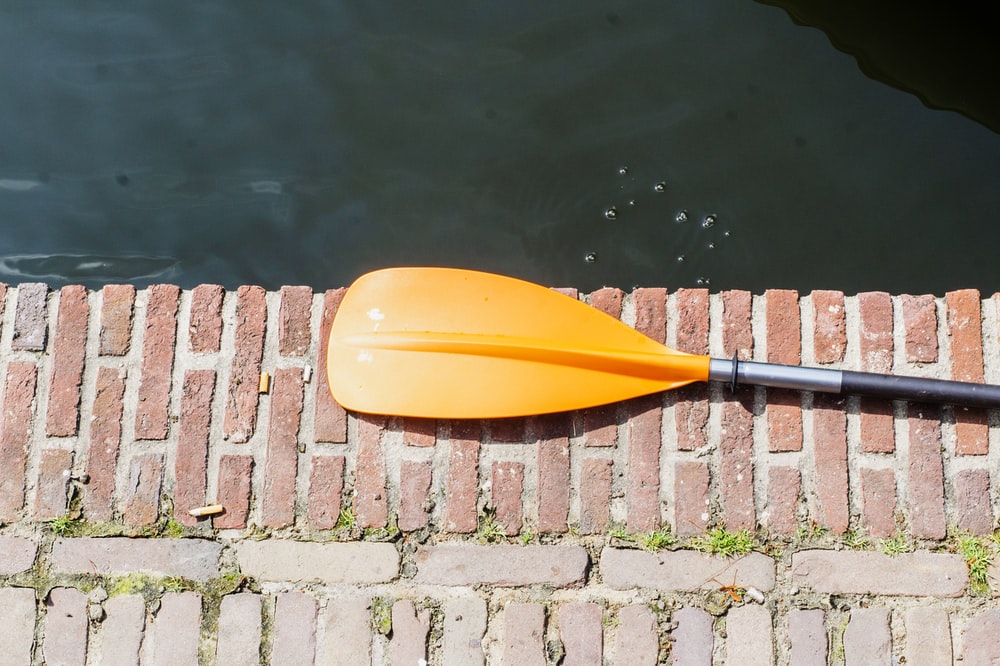
The RNLI have excellent tips and guidance on what you should be looking for in a buoyancy aid so we'll leave it to the experts.
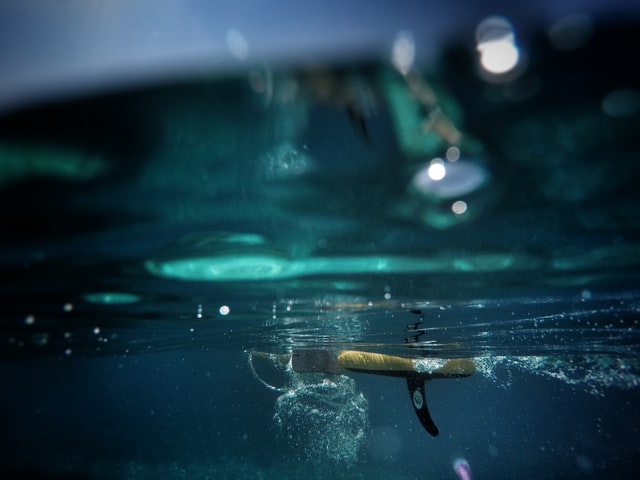
The first time you go out paddling, expect to fall in. No water sports are easy to master on the first go, largely because you have a huge moving body of water on you that tries to literally throw you off. So start with the basics (and go out on a flat day!)
Keep your knees slightly bent, place your feet hip-width apart in the middle of your board and keep your back straight. You can even try starting on your knees if you want, coming up one foot at a time once you've got the hang of the space and the motion.
Try to paddle in a straight line back and forth near the shore until you get the hang of it, then you can start venturing further out.
Let's start with the easy one. Feet on the board as described above, place the paddle to the side of the board towards the nose and dip the blade in the water so the bottom of the blade is pointing away from you, push back towards the tail and voila!
Get this right and the rest will come easier, promise. Remember to keep that back straight and twist your pelvis as your turn, it should be your core doing the work, not your arms.
Like the above, but you guessed it - in reverse! Plant the blade behind you (not turning the way it's pointing), and drag it through the water from the tail of the board to the nose.
This is how you turn. The sweep stroke is effectively a long, semi-circular motion that allows the board to pivot in the water. Bend your knees more than they already are, keeping your feet hips width apart, pivot your hips and shoulders and plant the blade at the nose of the board before making a big wide arc away from the board.
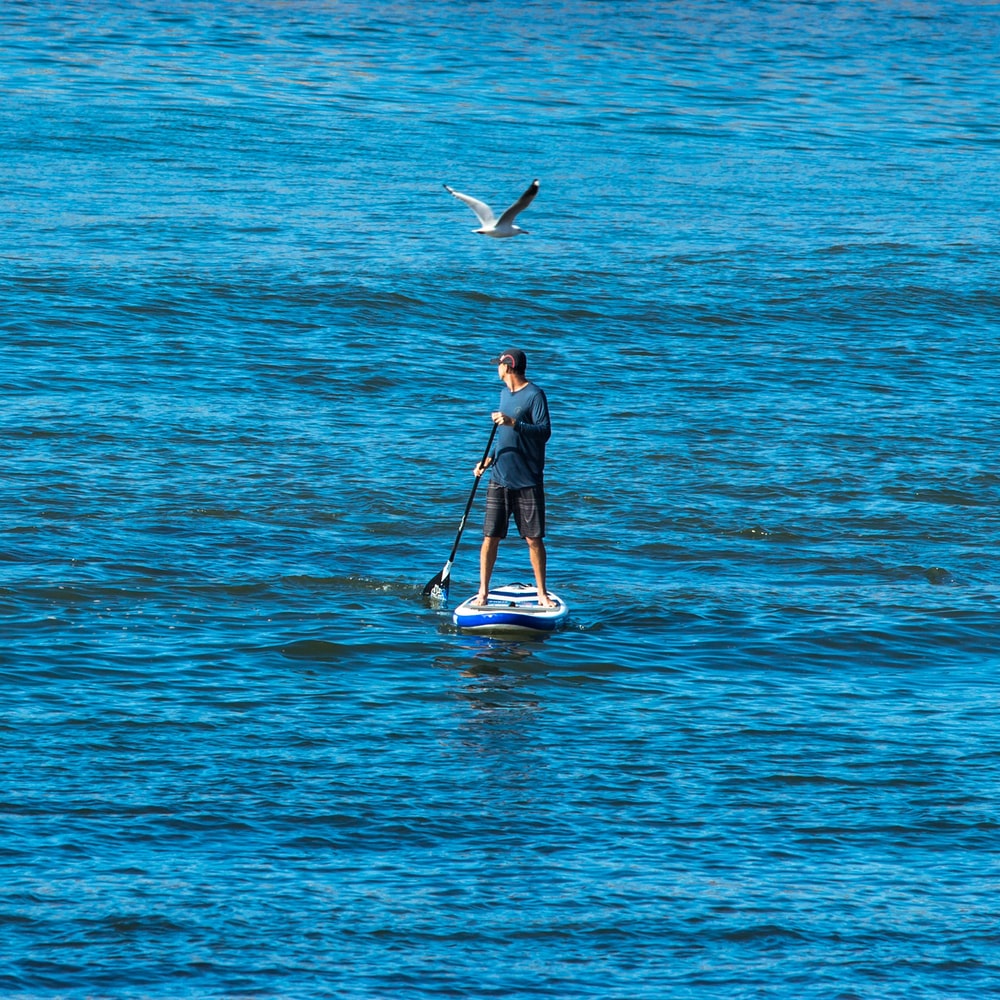
Unlike running, surfing or hiking, you’re not putting any pressure on your joints, though you're still getting a solid full-body workout. Plus, exploring by paddle board is way better for the environment than zipping around on a motor boat or jet ski.
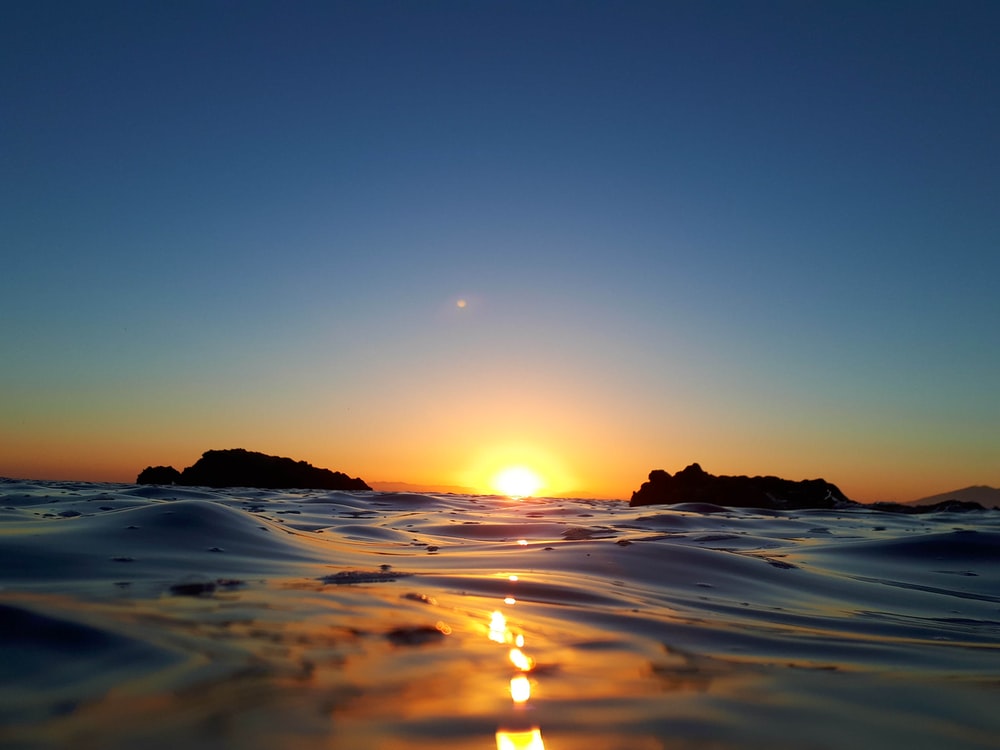
Taking a few paddle boards out with friends is one of the best ways to kick back and let the worries of the day fall away. Unlike surfing or mountain biking, you can take it easy and chat as you paddle and be truly present with each other, instead of checking your phone every few minutes.
Even having the height of your own body allows you to see things you wouldn't if you were right in the water. Talk about getting above stuff to get clarity... life metaphors, am I right? Seriously though, when the water is clear and the sea bed sandy, paddleboarding is an amazing, non-invasive way to see epic marine wildlife.
If you're paddling properly (see above) then you should be seriously working your core. Your arms shouldn't be aching too much but you'll definitely feel it in those abs the next day.
You’ve heard of SUP yoga, right? What about SUP surfing? It’s essentially surfing, but on paddle boards and still with a SUP paddle. It won't be long until this fast-growing sport hits the mainstream.
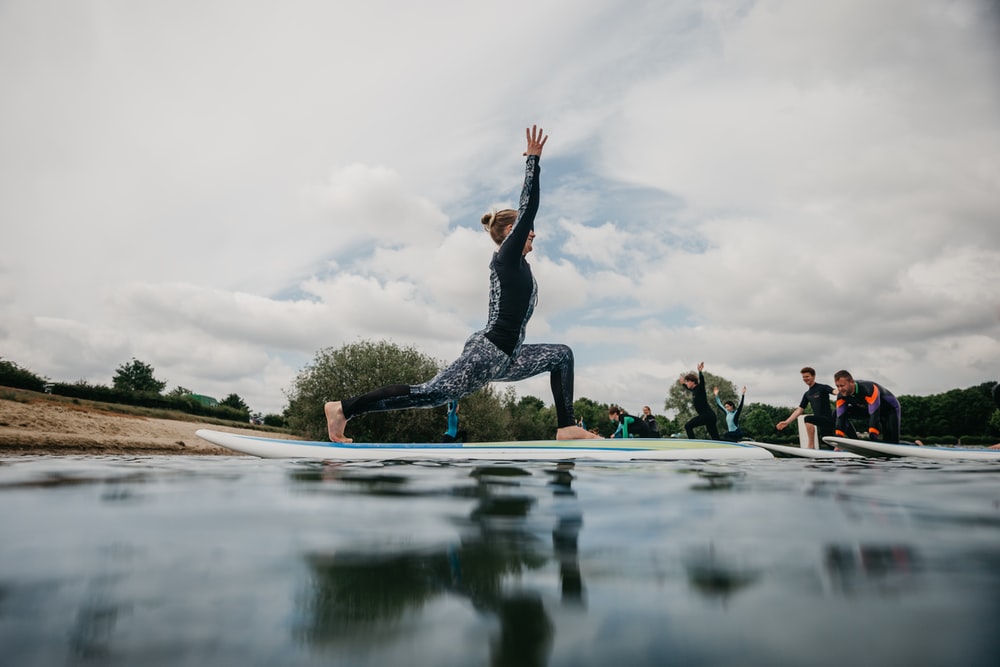
Paddling with your core muscles, as opposed to your arms, is one of the most important paddleboarding tips out there. Keep your knees slightly bent, your torso straight and place your feet on the axis of the board.
To paddle with your core, make sure it's your torso that pivots, your arms should stay relatively straight. You'll move the board forward quicker and lose less energy this way, trust me.
Paddleboarding offers so many metaphors for life. Staying afloat despite the waves, remembering to look up and enjoy the view, keep looking forward... the list goes on. But the most important one? The idea of falling in is always worse than the reality.
Falling in is actually a really good thing, because you quickly realise it's not that bad and then you can start to freely enjoy it.
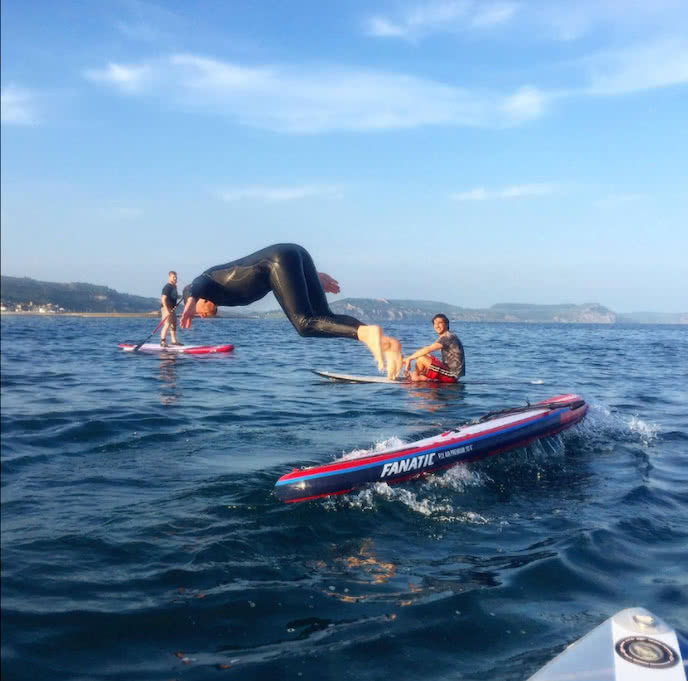
This feels like an basic one, but you'd be surprised how many beginners battle with the water, only to come back exhausted and find out it's because they weren't using the paddle correctly.
The blade should be facing forwards, not towards you, which feels counter-intuitive when you look at it, but trust me. If it's your first time and you're hiring a board, why not see if they offer lessons? Even an hour mastering the paddle technique will make your future adventures better.
If you're going out alone and don't want to leave your belongings unattended, taking a dry bag and tethering it to your board is a good idea.
This will allow you to take your phone with you if you get into trouble, and is pretty good at keeping your sandwiches dry if your going on a day trip. If you fall, it will keep everything lovely and dry.
Like anything in life, it pays to look up and see the bigger picture. But there's a practical reason for this tip: your balance will be a whole lot better. Focus on a spot on the horizon and your arms and legs will find their way. If you spend the whole time looking at your feet and your paddle, chances are you'll be in the water before you know it.
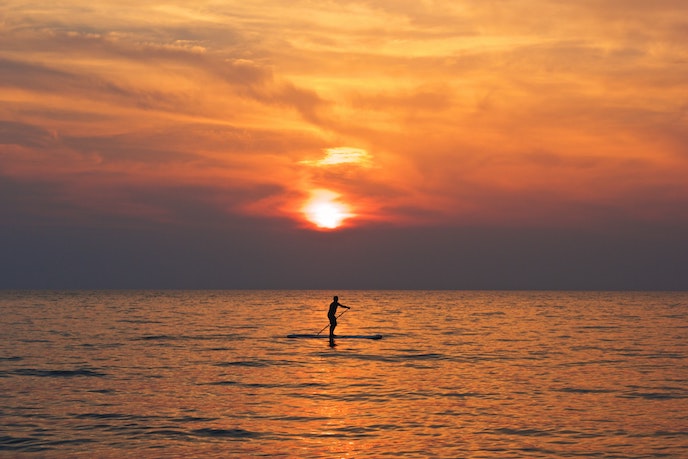
Paddleboarding has an amazing community around it, and it's a tribe that's only getting bigger and more widespread. A quick Google or Facebook search will bring up heaps of local clubs and they generally offer taster sessions as well as kit, so you don't necessarily have to go investing in a board before you find your SUP tribe. Get paddling!
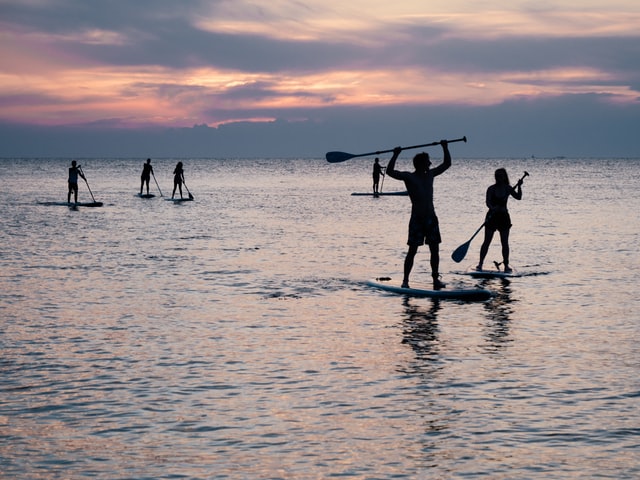
There's a perception that it's going to be really difficult, but you'd be surprised at how quickly you get the hang of the basics and the balance element once you're on the board. It's way wider and longer than a surfboard and if you try starting on your knees you'll gain confidence in no time.
The harder aspect in my opinion is mastering the strokes and your environment. You'll tire quickly if you're not using the paddle correctly or aren't aware of what the tide, wind and current are doing. Of all outdoor sports though, I think it's one of the easiest to learn!
Great question. I definitely wouldn't call paddle boarding an adrenaline sport, it's more of a core strength workout and meditative experience than speed and thrill, though it's a great complement to extreme sports. It just does different things for you.
It calms your mind, strengthens your body and enables you to really be in tune with nature, which aren't necessarily things you get from adrenaline sports.
Both are great and both can make us feel better mentally and physically. However, if you do want something a bit more whizzy, SUP surfing is a great way to get your speed kicks on the waves.
This is the number 1 question people ask when learning to stand up paddle board. And I say to them "yeah, what if?" Usually they realise they'll get a bit wet and they'll climb back on, and that's it. You should always be dressed prepared to fall in, with a wetsuit or swimming costume and a personal flotation device (pfd/buoyancy aid), and you'll be tied to your board by the leash, so really what's the worst that can happen?
No not at all. It's similar to yoga and flexibility in that the more you do it the fitter you'll get, but you definitely don't need to be fit to start with. You just paddle for as long as you can and are comfortable with.
You'll definitely feel it in your arms, legs, abs and well, everywhere, but it isn't so hard that you won't be able to get out there at all. Plus, if you get tired you can just sit down and enjoy being on the open water for a few minutes until you're ready to pick your paddle up again.
Absolutely. It's the number one source of safety (number 2 is a buoyancy aid, if you were wondering) and keeps you attached to your paddle board at all times. If you got separated from your board, even a light current or rip tide could mean your board drifts metres away from you in seconds, leaving you without a potentially life-saving floatation device. Nobody should ever be paddling without one.
Sure! Pretty much any beach with a tourist on it has SUP hire these days, so if you're on holiday and want to give it go, go for it! I'd definitely recommend getting a lesson first, just so you know you're mastering the paddle technique and are aware of all the safety information, but if you feel ocean-savvy enough to just rent one and go, go for it!
Call to Adventure also run a Stand Up Paddle Boarding trip suitable for beginners, it's a 3-day SUP, hiking and wild swimming trip along the stunning Jurassic Coast and a great way to gain experience and confidence quickly and safely.